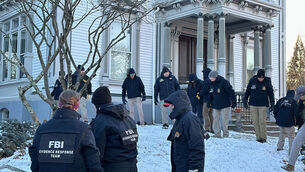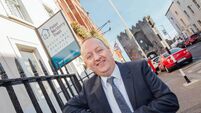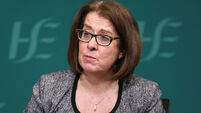G20 death case PC may face charge
Britain's Director of Public Prosecutions is to examine whether there is enough evidence to charge a Scotland Yard officer linked to the death of Ian Tomlinson during the G20 protests with manslaughter.
Keir Starmer QC vowed to launch a quick and “thorough” review of his decision not to prosecute Pc Simon Harwood after an inquest jury unanimously ruled the newspaper seller was unlawfully killed at the protests.
Jurors delivered a damning assessment of the Scotland Yard officer’s actions, saying he “deliberately and intentionally” shoved the newspaper seller to the ground.
Pc Harwood, a father-of-two, will now become the first officer to face a public Metropolitan Police disciplinary inquiry.
As family members welcomed “justice” for Mr Tomlinson after a two-year wait, Deputy Assistant Commissioner Rose Fitzpatrick expressed her “profound condolences”.
Following the end of the three-day inquest yesterday, the police chief said: “It is a matter of deep regret that the actions of an MPS officer have been found to have caused the death of a member of the public.”
Mr Tomlinson collapsed after suffering an internal bleed as a result of the officer’s “excessive and unreasonable” force, the jury said.
They discredited evidence from both Pc Harwood and pathologist Dr Freddy Patel.
In a written statement, the jurors told the inquest: “Both the baton strike and the push were excessive and unreasonable.
“As a result, Mr Tomlinson suffered internal bleeding which led to his collapse within a few minutes and his subsequent death.
“At the time of the strike and the push, Mr Tomlinson was walking away from the police line. He was complying with police instructions to leave Royal Exchange Buildings, the passage. He posed no threat.”
Paul King, Mr Tomlinson’s stepson, thanked the jury as he spoke of his hopes that the Crown Prosecution Service would reverse its decision last year not to pursue manslaughter charges.
Standing alongside Mr Tomlinson’s widow Julia outside the hearing, he said: “After two years, we’re really grateful that the inquest process has made a strong statement about how Ian died.
“We are grateful to the jury and the coroner and we think the jury finding speaks for itself in the verdict of unlawful killing.”
Mr Tomlinson, a homeless 47-year-old newspaper seller, collapsed and died on the fringes of the demonstrations in central London on April 1 2009.
The death became an international controversy after New York businessman Christopher La Jaunie handed footage he had taken of the police confrontation to the Guardian newspaper.
Dr Patel’s claim that Mr Tomlinson died of a heart attack was dismissed by a string of experts who said he died of internal bleeding.
Pc Harwood was accused by the victim’s family of telling lies in a bid to get off the hook.
Mr Tomlinson had been turned away from a line of officers with his hands in his pockets when Pc Harwood hit out.
CCTV images, police helicopter footage and hand-held video recordings show Mr Tomlinson cutting a lonely figure as he staggered away from a police cordon after being hit with a baton.
Footage shows Mr Tomlinson gesturing to police and appearing angry after being sent tumbling to the ground.
He eventually collapsed flat out and muttered “they got me, the f****** got me” before dying minutes later.
Colleagues were shocked by Pc Harwood’s actions.
Pc Kerry Smith told the inquest: “He (Mr Tomlinson) sat up and looked towards us and he said ’I just wanted to go home’.”
Appearing for three days at the hearing in Fleet Street, central London, Pc Harwood apologised to family members for “any way” he may be responsible for the death.
But relatives’ lawyer Matthew Ryder QC said he told “half truths” and “deliberately painted a false picture of Mr Tomlinson”.
The barrister added: “I am going to suggest to you that you are not here to help Mr Tomlinson’s family but to help yourself.”
Mr Tomlinson, who was born in Matlock, Derbyshire, was an alcoholic with a series of medical complaints who had slept rough for 20 years.
Dr Patel initially found the death was consistent with natural causes because the newspaper seller had coronary heart disease and could have died at any time.
But another two pathologists, Dr Nat Cary and Dr Kenneth Shorrock, later carried out their own post-mortem examinations and came to a different conclusion.
Widow Julia said the death devastated her family, adding: “I remember feeling he was the best thing that ever happened to me.”













